Categories: Featured Articles » Sharing experience
Number of views: 37968
Comments on the article: 4
Proper use of lithium-ion batteries
In this article, under the correct operation of lithium-ion batteries, we will understand the observance of such conditions in which the lithium-ion battery of a portable device can work safely, will last a long time, and the functioning of the device will remain full.
It’s about lithium ion batteries, since in most modern mobile gadgets: tablets, laptops, smartphones, etc., lithium batteries are installed. And if earlier it was often possible to meet nickel-metal hydride, nickel-cadmium, today lithium is widely used.
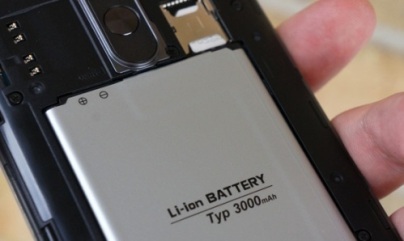
With proper use, a lithium-ion battery will last 10-15 times longer than when used haphazardly, which will be described later in the text. Here you will find recommendations for users, compliance with which will help to keep the lithium battery efficient and capacious during the entire period of use of the portable device, until the time comes and the decision to purchase a new one to replace the old one.
Often, the smartphone’s battery swells, often deforming the case. Bloating is a symptom of the accumulation of gases, reaction products flowing inside the battery during improper use, leading to increased pressure on the inside of the battery.
If the swollen battery is not replaced in time, it will completely collapse at some point or explode in the worst case. But the most interesting thing in this story with a smartphone is that the described problem can be easily prevented and prevented by observing the simple rules for operating the device with a lithium-ion battery, and then the battery life will be saved for as long as possible.
Do not overheat.
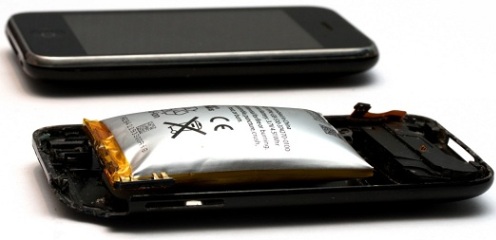
Excessive heat, for whatever reason it does not appear, harms the lithium-ion battery most. The reasons can be both an external source of heat, and stressful modes of charge and discharge. So, if you leave your smartphone in the sun, for example on the beach or in a holder inside the car, this will reduce both the ability of the battery to take charge during charging and the ability to hold it after.
It is best to maintain the capacity of a lithium battery if the temperature of its case does not rise above 20 ° C. If the temperature rises above 30 ° C, then the ability to retain charge will already drop from the original 100% to 80%.
When heated to 45 ° C, the battery’s ability to hold a charge will already weaken by half. A temperature of 45 ° C, by the way, is easily achieved if you leave the device in the sun or use energy-intensive applications intensively.
That is, if you notice that the device or battery has warmed up significantly, go to a cool place (if the cause is the ambient temperature) or turn off unnecessary applications and services, lower the brightness of the display, turn on the power-saving mode - so you can reduce the power consumed by the device, and reduce the current that flows through the battery - the battery will begin to cool.
If this does not help, turn off the device, remove the battery (if possible) and wait until it cools down or until the device cools down, if the design does not allow to remove the battery.
On the contrary, an extremely cold battery, at a temperature below -4 ° C, simply can not give full power until it warms up, it is better if it reaches room temperature.
But in general, low temperatures are not able to cause the lithium battery such irreversible damage as increased ones, therefore, after warming an extremely cold battery to room temperature, the properties of its electrolyte will be restored.Remove the cold battery from the device indoors, or warm it slightly in your hands, then reinsert it.
Disconnect the charger in time
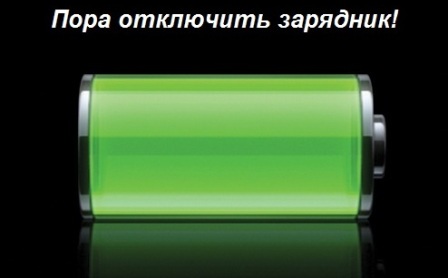
If the battery charges longer than expected, that is, if it remains connected to charge source even after fully charged, this can kill the battery, greatly reducing its capacity.
The bottom line is that the operating level of a conventional lithium battery should not exceed 3.6 volts for safe operation, however, chargers supply 4.2 volts to the terminals during charging. And if the charger is not disconnected in time (fortunately, some are automatically turned off by themselves), then inside the battery, harmful reactions will begin. In the worst case, excessive overheating will occur, and the chain reaction in the electrolyte will not take long.
The original branded chargers (which are included with the gadget itself from the manufacturer) are of high quality, they themselves are able to reduce charging current by interacting with the correct algorithm with the battery and with the controller built into the gadget.
With original chargers, the risk of overcharging is minimal. But for the sake of fidelity, it’s best to immediately disconnect the rechargeable device from the charger, as soon as a signal has arrived (sound, light indication or pictogram on the screen) that the battery is fully charged. Do not leave a fully charged smartphone connected to the charger for very long.
Do not worry that when you disconnect the smartphone from the charger, it will begin to discharge, because lithium batteries differ from other types of batteries in a low level of self-discharge. If you don’t even use the battery at all after charging, then a day after turning off the charge, only 5% of the energy, but everything will decrease completely, and in the next month - another 2%.
In any case, there is no need to leave the device on recharge (even from a branded charger) until the last moment, it is better to disconnect immediately, as soon as the full charge is indicated on the display (or indicator).
All modern mobile devices with lithium-ion batteries show 100% charge, when the battery is really fully charged, there is no need to hold it for longer.
Do not allow deep discharge.
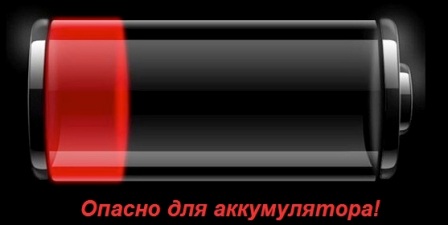
There are different options for using the battery life. If you discharge the battery quickly and completely each time, this will be regularly accompanied by the release of a large amount of heat, because the discharge currents through the battery will flow considerable, and this is a destructive load on the battery.
If small discharge cycles are short, even then the battery will be recharged and then again discharged in several portions, the battery will last longer.
Modern lithium batteries normally withstand incomplete discharge and recharge, not like the very first lithium batteries!
And if we consider the effect of discharge-charge cycles on the total battery life, then in fact three discharge cycles of up to 66% and a charge of up to 100% are fundamentally equivalent in terms of wear and tear to a pair of discharge cycles of up to 50% and then charge up to 100%.
Many short discharge-charge cycles are not more harmful than several longer cycles. Intensive discharge is harmful - it causes heating and leads to irreversible processes, if it is deep (up to 20% and lower).
Heating and high current load clearly reduce the total battery life. Each deep discharge slowly but surely leads to irreversible destruction, so try to avoid deep discharge altogether. If the smartphone itself turned off - this is a sign of a deep discharge - you should not bring it to this. 20% is enough to recharge the device or insert a backup battery.
Discharge and charge the lithium battery slowly
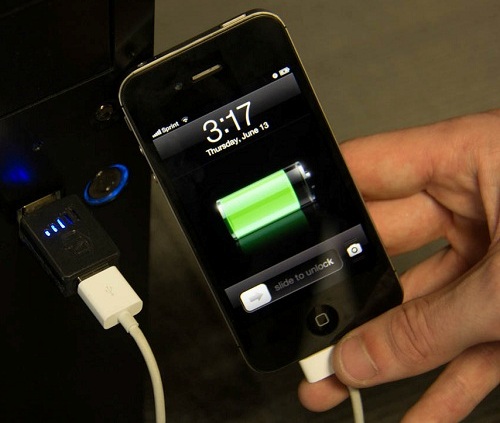
As mentioned above, intense discharge and charging are accompanied by high currents through the battery electrolyte, which leads to its overheating, and therefore to destructive processes (see - Why lithium-ion batteries explode).
But even if the stress mode was allowed, and the battery is very hot, do not rush to put it on charge. Wait until it cools down, and only after that connect to the charger, then it will be able to accept the charge normally and safely.
During charging, the battery should also not overheat, if this happens, then too high currents flow through the electrolyte, and this is harmful.
Poor-quality chargers sin by the so-called "fast charge", like some induction wireless chargers. It is better not to use such “fast” chargers. The fact is that a safe charger is required to respond to the current consumed by the battery during charging, and promptly change the supplied voltage, if necessary - reduce, when necessary - increase.
If the charger is just a transformer with a rectifier, then your battery is likely to overheat due to overvoltage and gradually collapse. Not all “fast” chargers are compatible with lithium batteries.
The best option is the original charger from the same manufacturer as the charging device, ideally the charger from the kit. But if there is no possibility to use the original charger, then use the one that gives less current - this will save the battery from overheating due to the supply of excessive power.
A good alternative to the original charger is the computer’s USB port. USB 2.0 gives 500mA, USB 3.0 gives a maximum of 900mA. This is enough to charge safely.
Some of the “fast” devices are capable of pumping 3-4 amperes into the battery, but it is destructive for small-capacity batteries, which are batteries of handheld mobile gadgets (see documentation). A small current from USB is a guarantee of the safety of a lithium-ion battery.
Carry a backup battery with you.
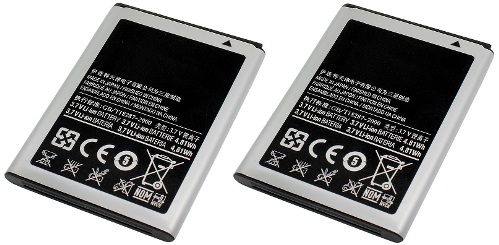
Many devices allow you to remove the battery, so having a spare battery is not a problem at all. The device’s operating time will double, a deep discharge is excluded (install a backup battery beforehand, without waiting for the main battery to discharge completely), there is no temptation to use a harmful “fast” charger. 20% of the main battery discharge - a signal to establish a backup.
If the first battery has become very hot due to intense load or due to external heating (accidentally left in the sun) - insert a spare one, and while the first one will cool down, you will continue to use your device, keeping both batteries unharmed. When the one that has cooled has cooled, it can be put on recharging in the original charger (mains or car).
So, for a lithium battery to last a long and true time, it is necessary:
1. Do not allow the battery to warm up above 30 ° C; the best temperature is 20 ° C.
2. Eliminate excessive battery and overvoltage at the terminals, optimally 3.6 V.
3. Avoid deep discharge of the battery - let 20% be the limit.
4. Avoid high current loads during charging and discharging (see documentation), use USB.
5. Have a backup battery.
See also at e.imadeself.com
:
